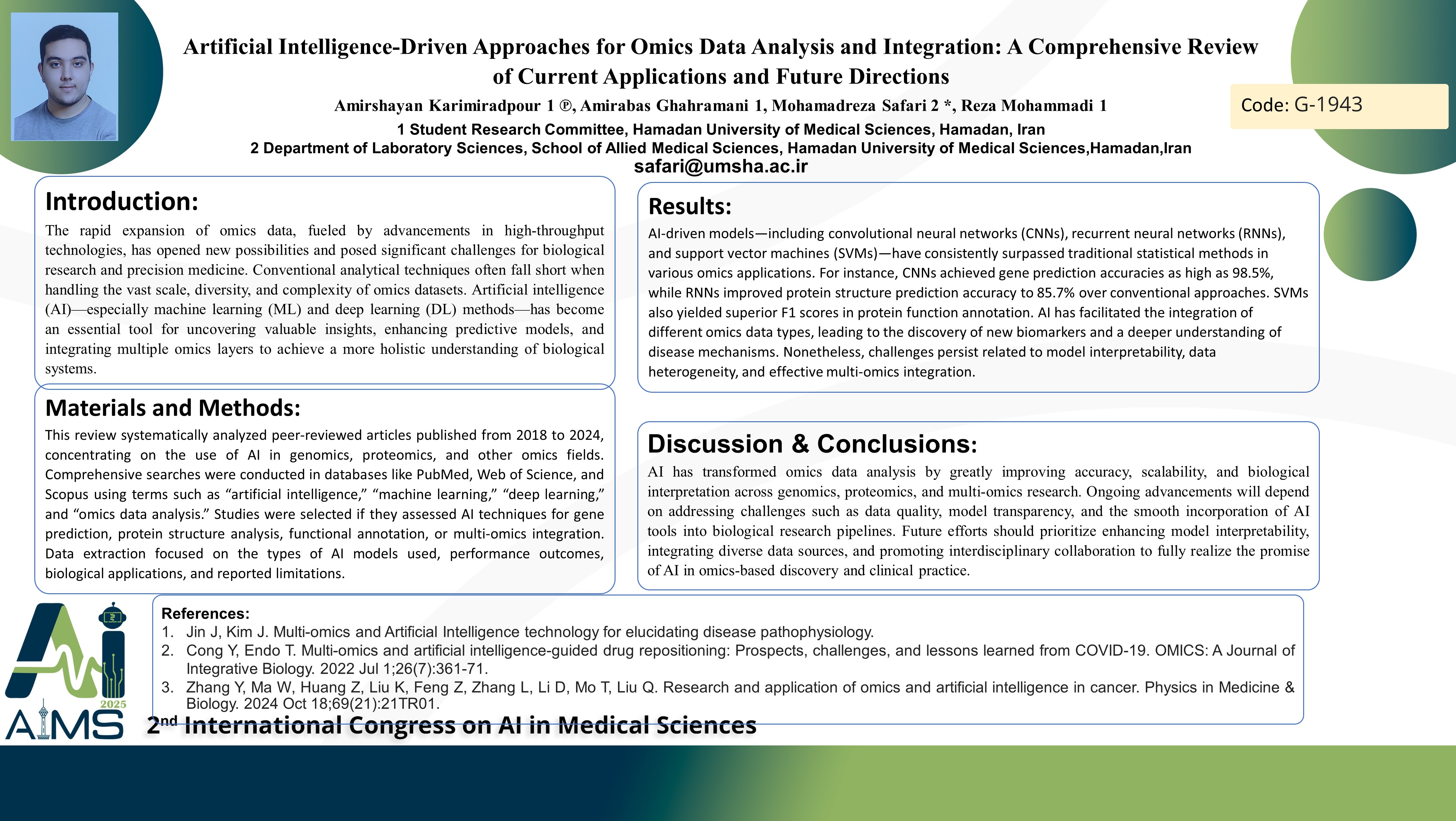Artificial Intelligence-Driven Approaches for Omics Data Analysis and Integration: A Comprehensive Review of Current Applications and Future Directions
Code: G-1943
Authors: Amirshayan Karimiradpour ℗, Amirabas Ghahramani, Mohammadreza Safari *, Reza Mohammadi
Schedule: Not Scheduled!
Tag: Intelligent Virtual Assistant
Download: Download Poster
Abstract:
Abstract
Introduction: The rapid expansion of omics data, fueled by advancements in high-throughput technologies, has opened new possibilities and posed significant challenges for biological research and precision medicine. Conventional analytical techniques often fall short when handling the vast scale, diversity, and complexity of omics datasets. Artificial intelligence (AI)—especially machine learning (ML) and deep learning (DL) methods—has become an essential tool for uncovering valuable insights, enhancing predictive models, and integrating multiple omics layers to achieve a more holistic understanding of biological systems. Methods: This review systematically analyzed peer-reviewed articles published from 2018 to 2024, concentrating on the use of AI in genomics, proteomics, and other omics fields. Comprehensive searches were conducted in databases like PubMed, Web of Science, and Scopus using terms such as “artificial intelligence,” “machine learning,” “deep learning,” and “omics data analysis.” Studies were selected if they assessed AI techniques for gene prediction, protein structure analysis, functional annotation, or multi-omics integration. Data extraction focused on the types of AI models used, performance outcomes, biological applications, and reported limitations. Results: AI-driven models—including convolutional neural networks (CNNs), recurrent neural networks (RNNs), and support vector machines (SVMs)—have consistently surpassed traditional statistical methods in various omics applications. For instance, CNNs achieved gene prediction accuracies as high as 98.5%, while RNNs improved protein structure prediction accuracy to 85.7% over conventional approaches. SVMs also yielded superior F1 scores in protein function annotation. AI has facilitated the integration of different omics data types, leading to the discovery of new biomarkers and a deeper understanding of disease mechanisms. Nonetheless, challenges persist related to model interpretability, data heterogeneity, and effective multi-omics integration. Conclusions: AI has transformed omics data analysis by greatly improving accuracy, scalability, and biological interpretation across genomics, proteomics, and multi-omics research. Ongoing advancements will depend on addressing challenges such as data quality, model transparency, and the smooth incorporation of AI tools into biological research pipelines. Future efforts should prioritize enhancing model interpretability, integrating diverse data sources, and promoting interdisciplinary collaboration to fully realize the promise of AI in omics-based discovery and clinical practice.
Keywords
Artificial Intelligence, Omics DataAnalysis, Machine Learning
